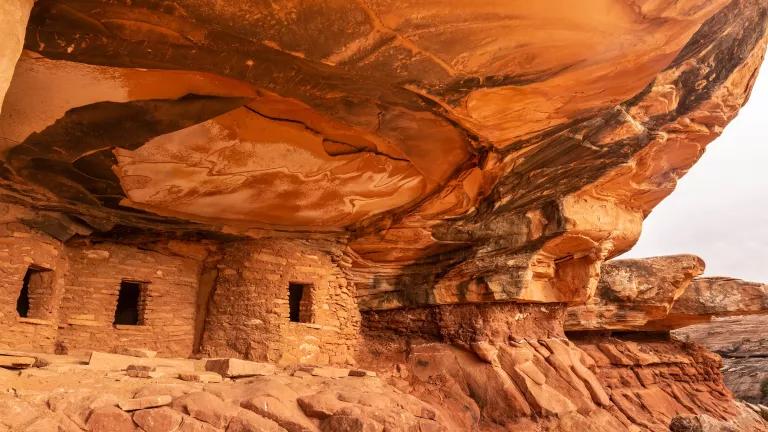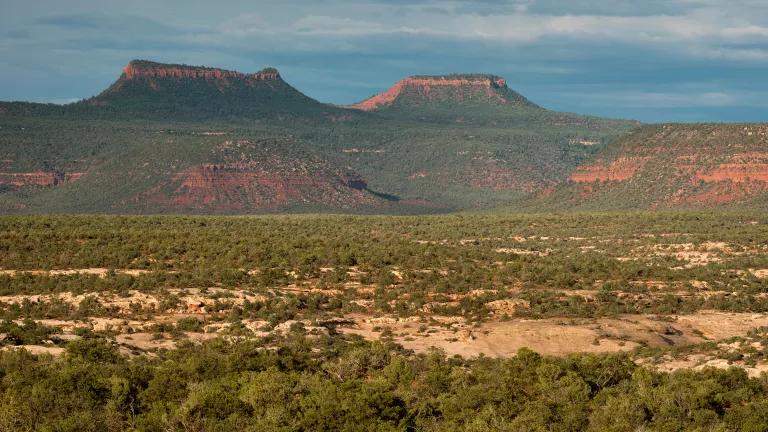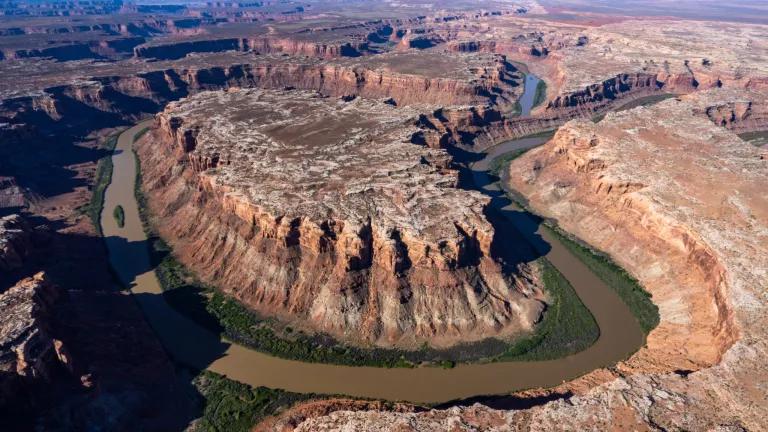A Monumental Plan for Bears Ears
Indigenous wisdom provides another way of knowing for management of National Monument.

Ending today, two federal agencies – the Bureau of Land Management and the Forest Service – collected an initial round of comments on a new management plan for Bears Ears National Monument in Utah. Former President Obama first created the monument in 2016. Despite actions in the Trump Administration to destroy it, President Biden restored the monument to its original glory a year ago this month.
Rising from the center of the southeastern Utah landscape and visible from every direction are twin buttes so distinctive that in each of the native languages of the region their name is the same: Hoon'Naqvut, Shash Jáa, Kwiyagatu Nukavachi, Ansh An Lashokdiwe, or "Bears Ears." For hundreds of generations, native peoples lived in the surrounding deep sandstone canyons, desert mesas, and meadow mountaintops, which constitute one of the densest and most significant cultural landscapes in the United States. Abundant rock art, ancient cliff dwellings, ceremonial sites, and countless other artifacts provide an extraordinary archaeological and cultural record that is important to us all, but most notably the land is profoundly sacred to many Native American tribes, including the Ute Mountain Ute Tribe, Navajo Nation, Ute Indian Tribe of the Uintah Ouray, Hopi Nation, and Zuni Tribe. President Barack Obama, Proclamation 9558 (December 28, 2016)
A management plan breathes life into a President’s proclamation creating a national monument under the Antiquities Act. It provides specifics regarding how the landscape will be protected – affirmative actions to protect it, as well as limitations on uses that harm it.
As proclaimed by both Obama and President Biden, for the first time, an Inter-tribal Commission would shape the management of a national monument. Stepping up to the task, the Bears Ears Inter-tribal Coalition has developed a proposed monument management plan and submitted it to the federal agencies. Comments submitted by NRDC and other conservation organizations support this plan.
Among other things, the comments call on the BLM and Forest Service to take the following actions:
- Employ an Earth-to-Sky concept (recognizing the Bears Ears cultural landscape as a holistic and interconnected ecosystem). Such approach requires protection of everything within the landscape - sacred cultural sites, ancestral objects, plants, animals, streams, springs and rivers, diverse living landscapes, cryptobiotic soils, and the clear sky.
- Eliminate threats to the native vegetation of the region including overgrazing, motorized vehicles, climate change, invasive species, recreation and vegetation alteration projects. These threats have led to declines in native species and increases in non-native species.
- Maximize carbon storage to promote resilient ecosystems and protect culturally significant plants. Such plants and the landscape they occupy are some of the objects that Bears Ears National Monument was created to protect.
- Implement a zoned management approach that prioritizes the protection and enhancement of Monument natural and cultural resources while allowing for a spectrum of high-quality recreation experiences—from backcountry solitude to interpretive site opportunities and trails in limited areas that are easy to access.
- Utilize traditional ecological knowledge. The knowledge amassed by the Native Americans whose ancestors inhabited this region, passed down from generation to generation, offers critical insight into the historic and scientific significance of the area. In Obama’s words, “Such knowledge is, itself, a resource to be protected and used in understanding and managing this landscape sustainably for generations to come.”
May the Biden Administration quickly act to deliver the protection this irreplaceable landscape deserves.



